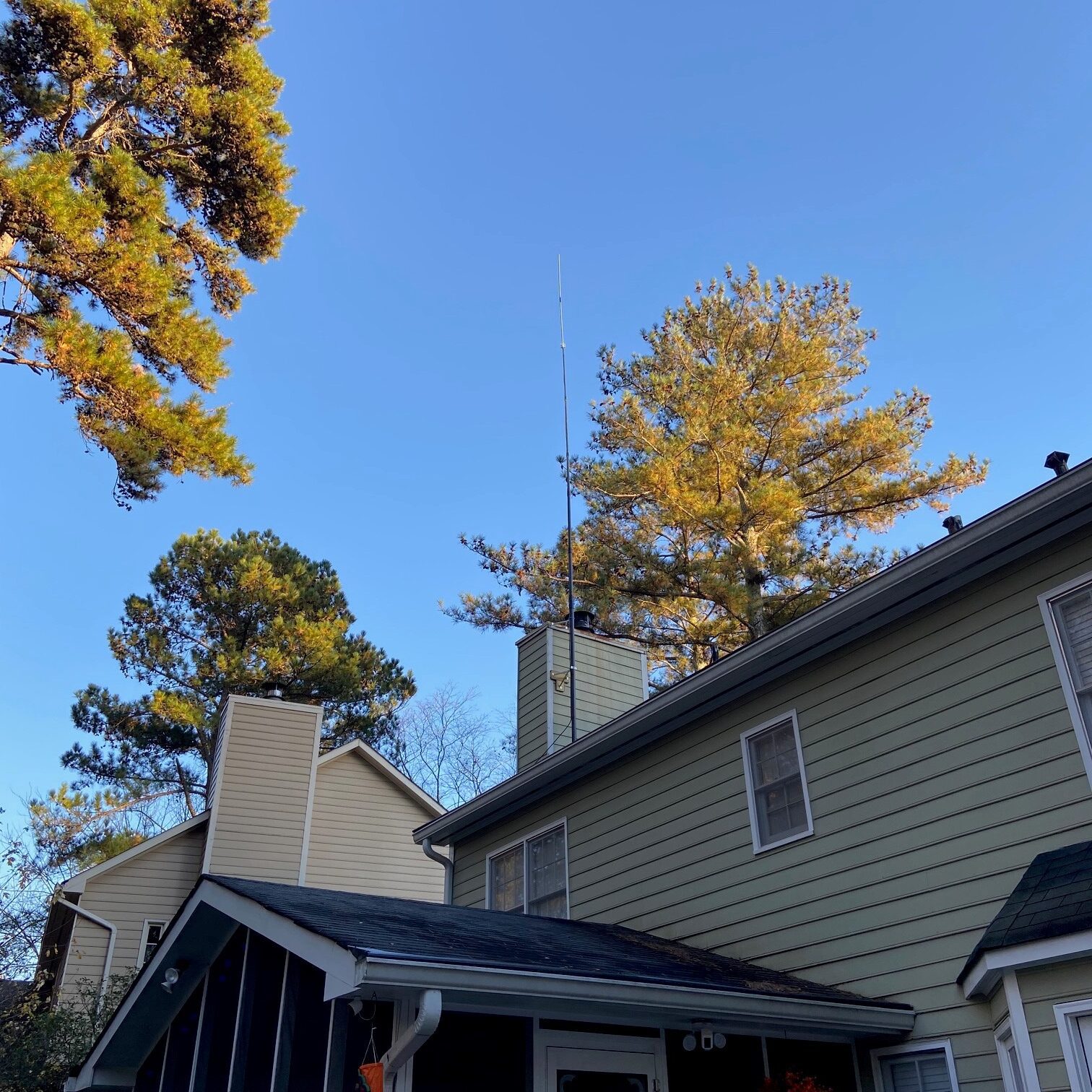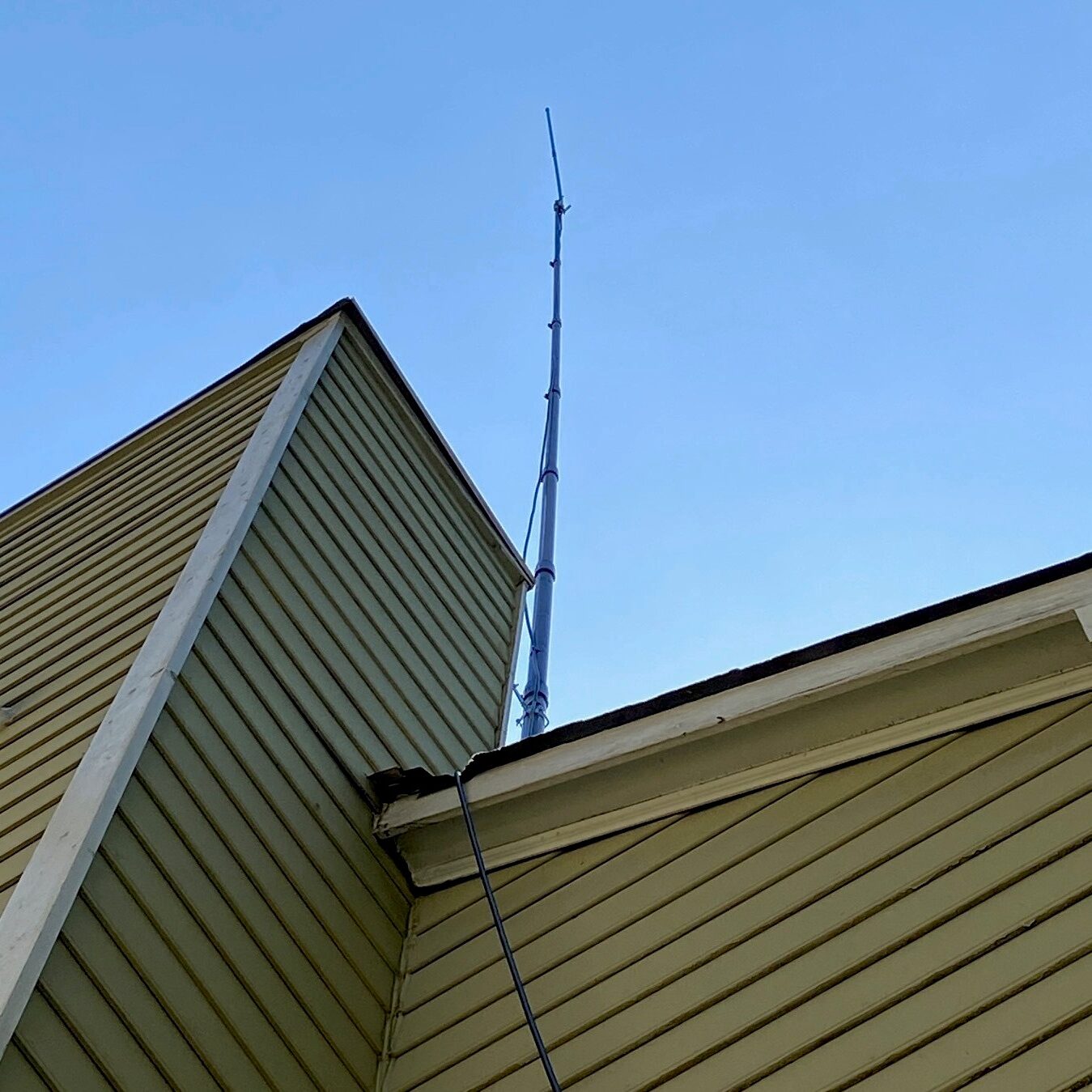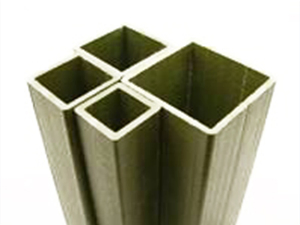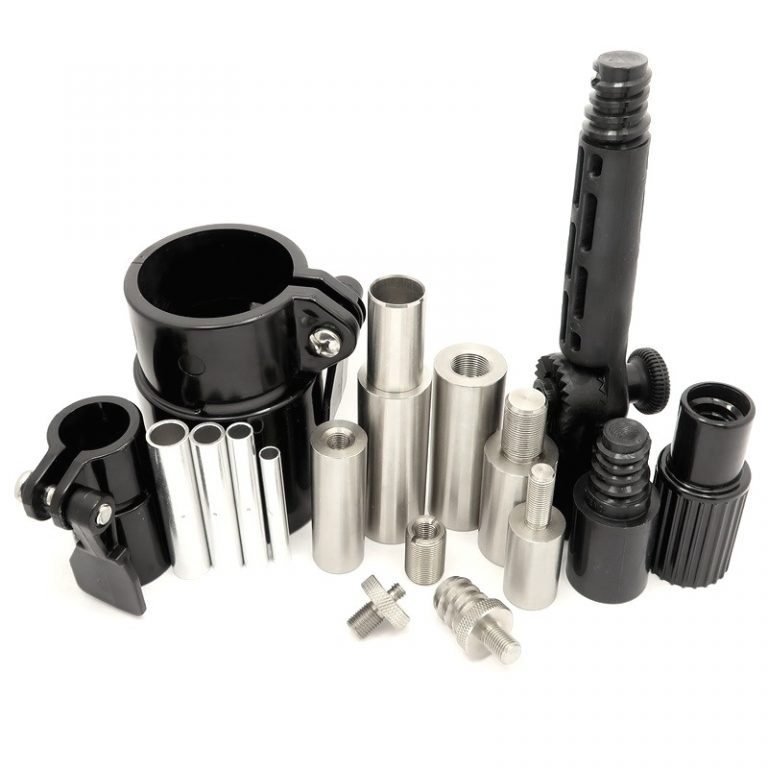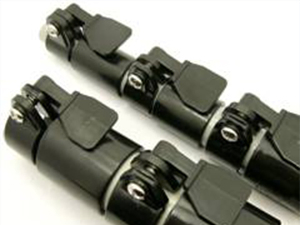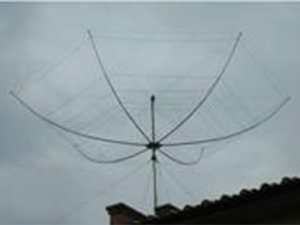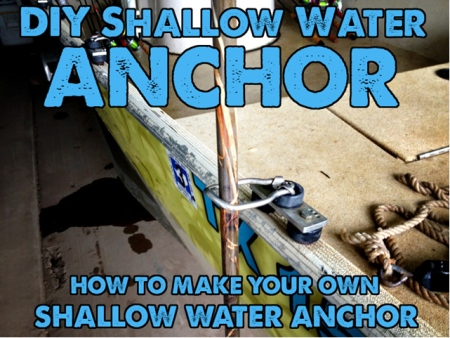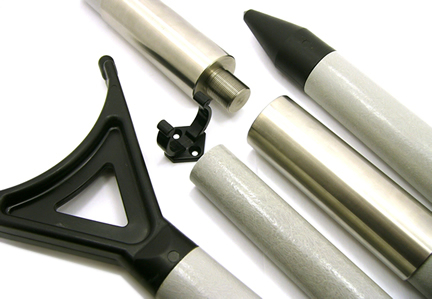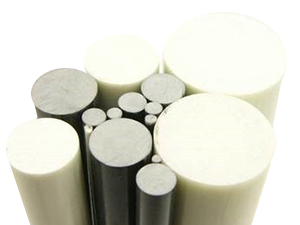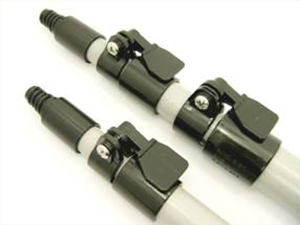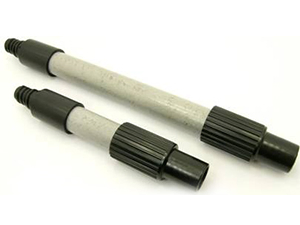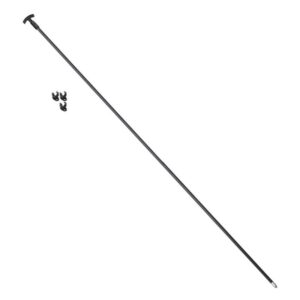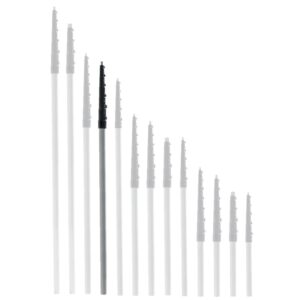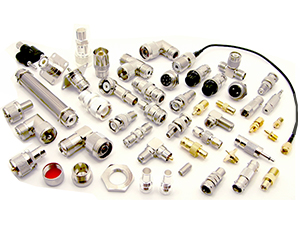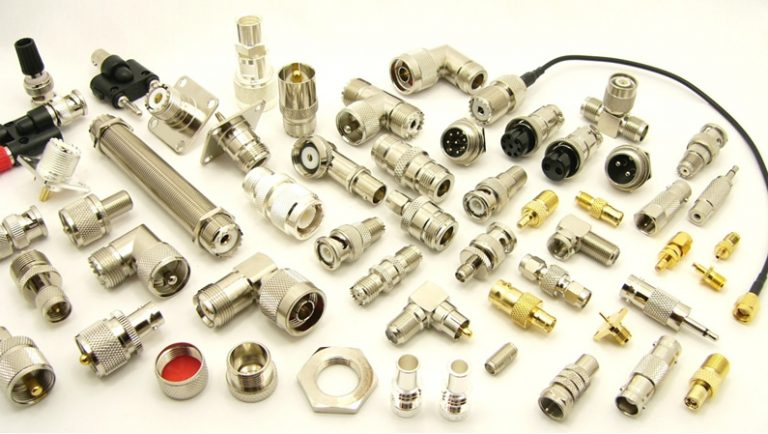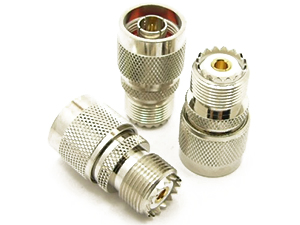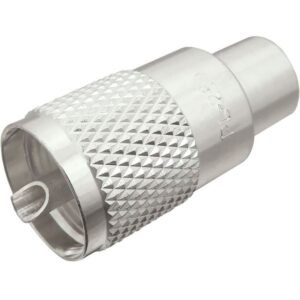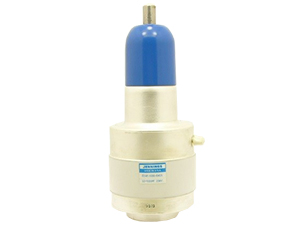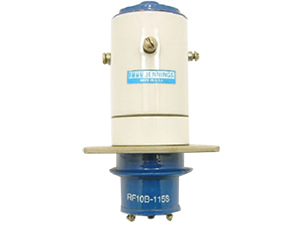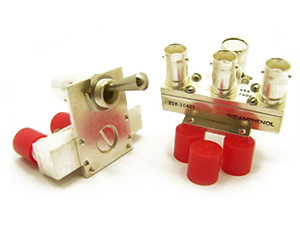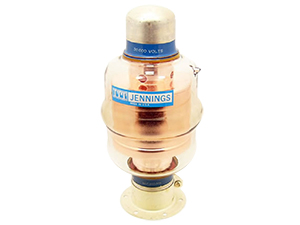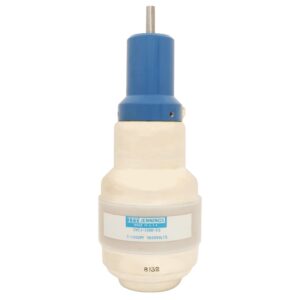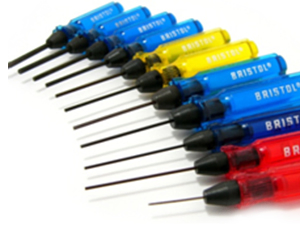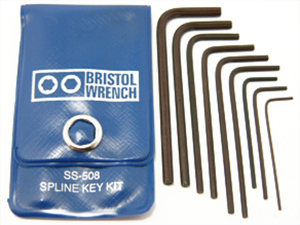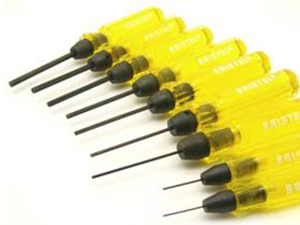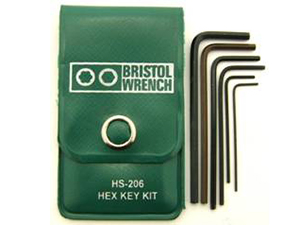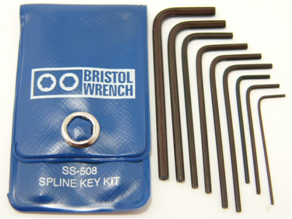In part one of this residential Helium Mining Installation series we discussed antennas, mounting brackets used for the fiberglass push up mast, and which mast I used for this installation. In part two we will be going in depth on the fiberglass mast itself. This includes things like, which one did I use, how to assemble it, how to mark the tubes properly, how to tighten the clamp screws to the proper tightness, and also what NOT to do and what to avoid.
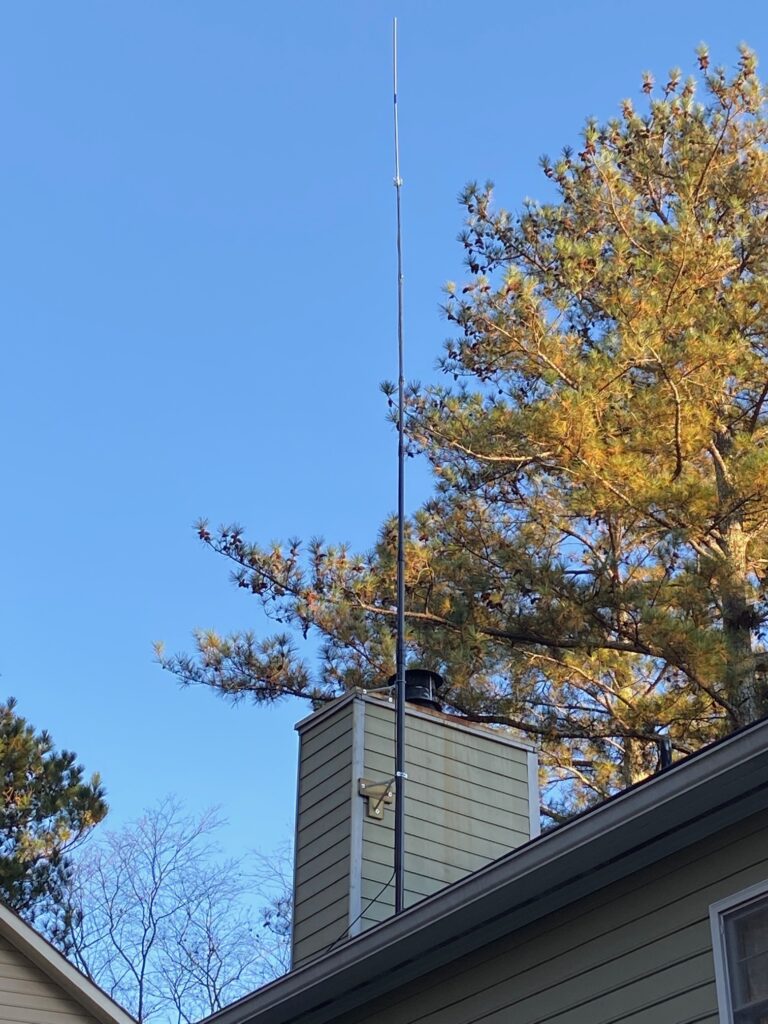
What fiberglass Mast did I use?
I used the Max-Gain Systems 38 foot MK-6-HD BLACK Stealth Mast. I DID NOT USE THE ENTIRE 38 FEET. I wanted to get that out of the way quickly before you think you can use that mast unguyed. If you wanted to use the entire 38 feet you would need to use guy lines in order to stabilize the mast. I did not have room for guy lines being where I needed to locate the mast so I had to go a different route. What I did was only extend each section 35 inches. Each tube of the MK-6-HD mast was 72 inches long plus the telescoping clamp (you cannot figure the clamp in any measurement as it only supports the vertical load). Only extending each section 35 inches allows for additional “overlap” at each joint going down the mast. See the diagram below:
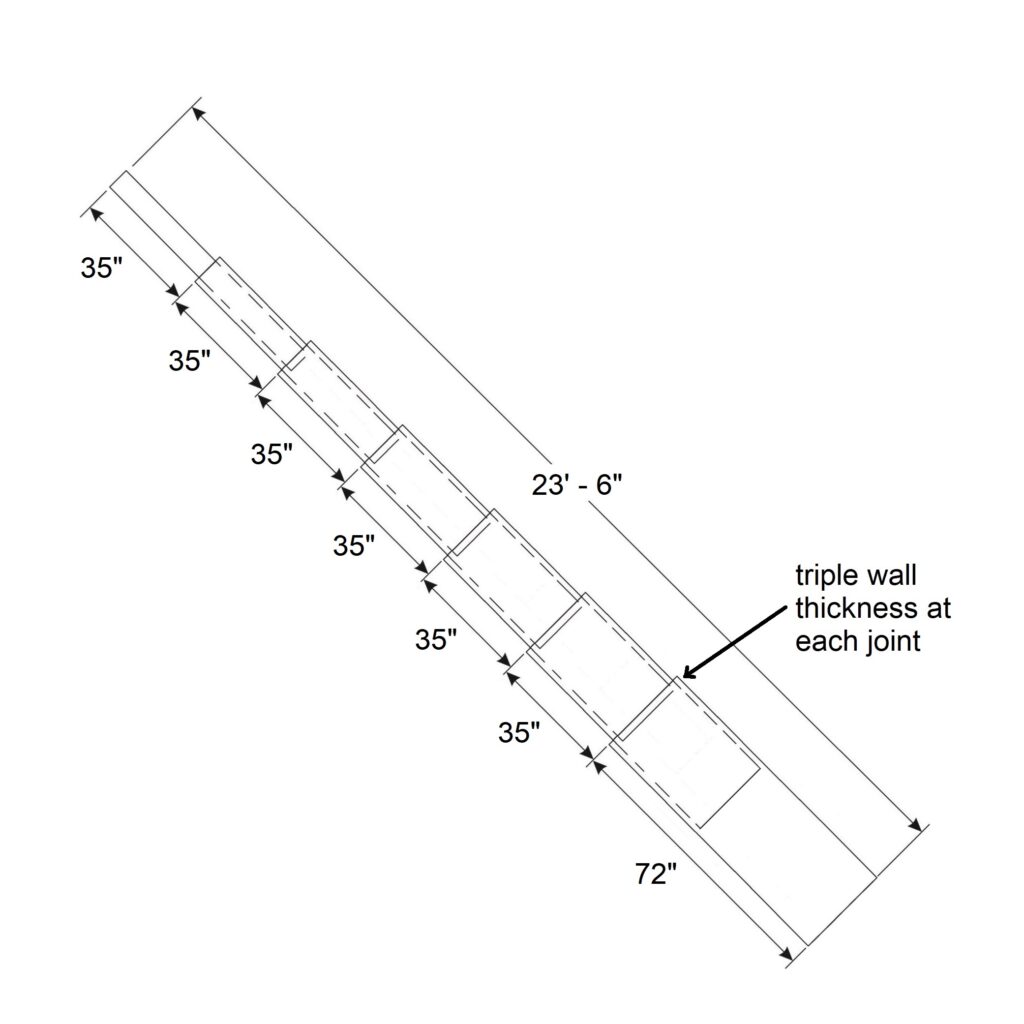
Not to go off on a rant about safety, but roof safety is one thing that you cannot skimp out on. Be sure, if you can, to use proper climbing equipment where possible and DO NOT GO FAST, TAKE YOUR TIME and think out your every movement while on the ground BEFORE you even go up the ladder. One of the best rules of thumb is to always remember to have three points of contact even on a roof. If the shingles are hot, wear gloves. If you have a slick roof, algae on your roof, or debris on your roof please reconsider getting up there at all.
Assembling the mast
Assembly is very easy. Usually takes about 30 minutes from when the package is opened.
Things you will need to assemble the mast:
1x pack JB Weld 2-Part Epoxy (the Original Coldweld Formula)
1x Damp cloth or shop rag (used to remove surface dust)
1x #3 Phillips head screw driver. (the #3 is a size reference for the size of the phillips head)
1x Tape Measure
1x Big Black Sharpie (used for marking the extended position of the tubes)
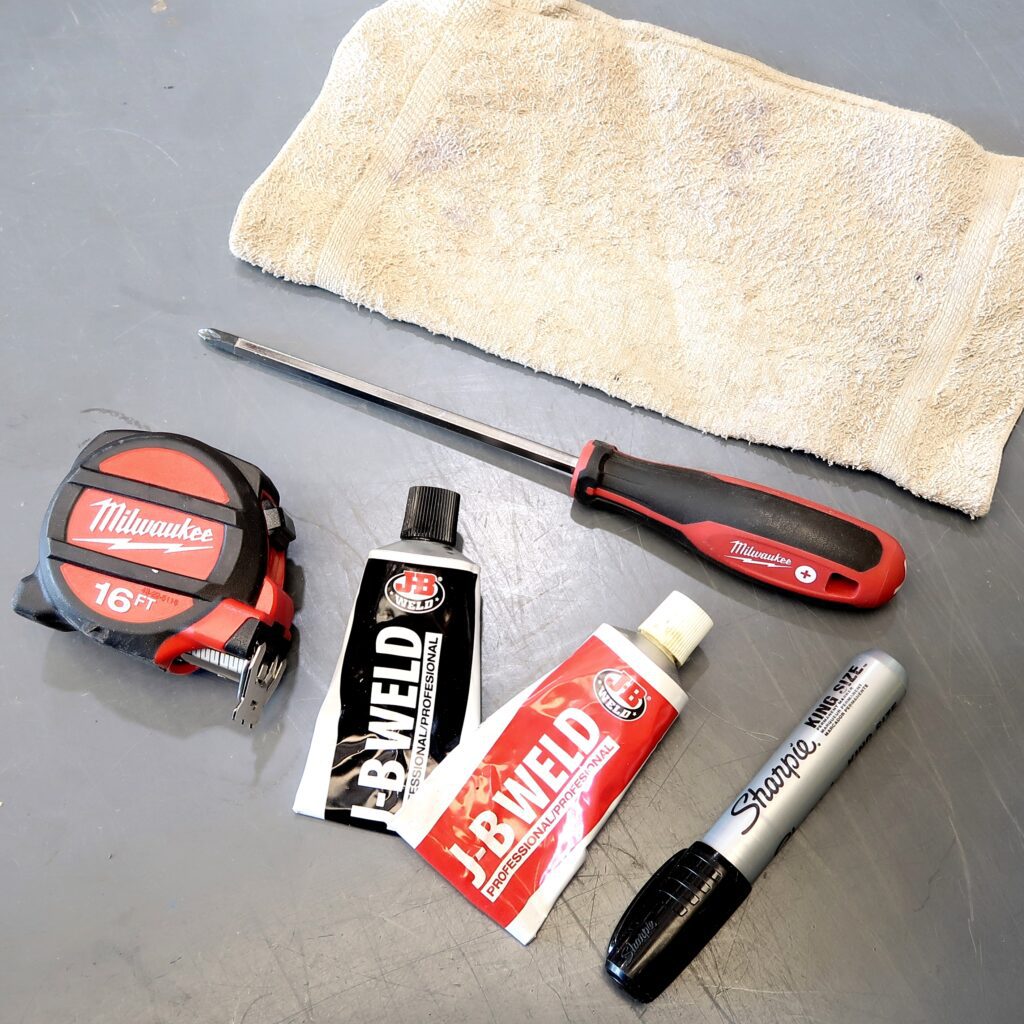
The first step is to unbox your fiberglass tubes and telescoping tube clamps and be sure you have the correct number of fiberglass tubes and the corresponding tube clamps. EXT masts come with 7 clamps and 8 fiberglass tubes, HD masts come with 6 clamps and 7 fiberglass tubes, and STD masts come with 5 clamps and 6 fiberglass tubes. For this assembly guide we will be assembling a 38 foot MK-6-HD Fiberglass Push Up Mast.
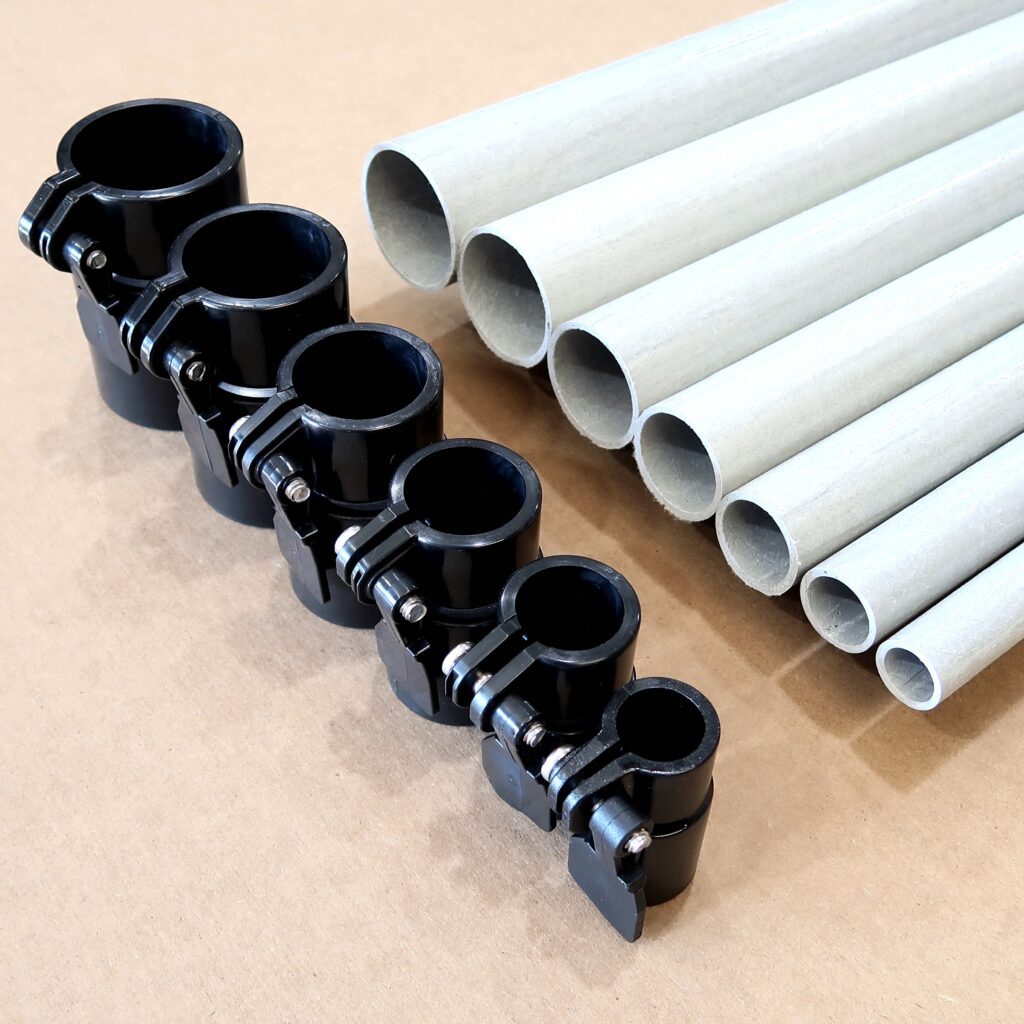
We need to attach the clamps onto the tubes. I like to do this permanently with JB Weld 2 Part Epoxy (The Original Coldweld Formula). A standard package from the hardware store should do the trick (1 oz). Squeeze out some of the hardener onto a surface you throw away afterward. I used a cut off piece box I had around. Then squeeze, on top of the hardener, the matching amount of the resin. Be sure to have paper towels at the ready here as this stuff starts to set pretty quickly and you will need to be sure you dont drip any of this on to anything you dont want to. Mix the JB Weld up by swirling it and folding from the outside of the pile inward. Once the black and white parts are mixed it should turn completely gray.
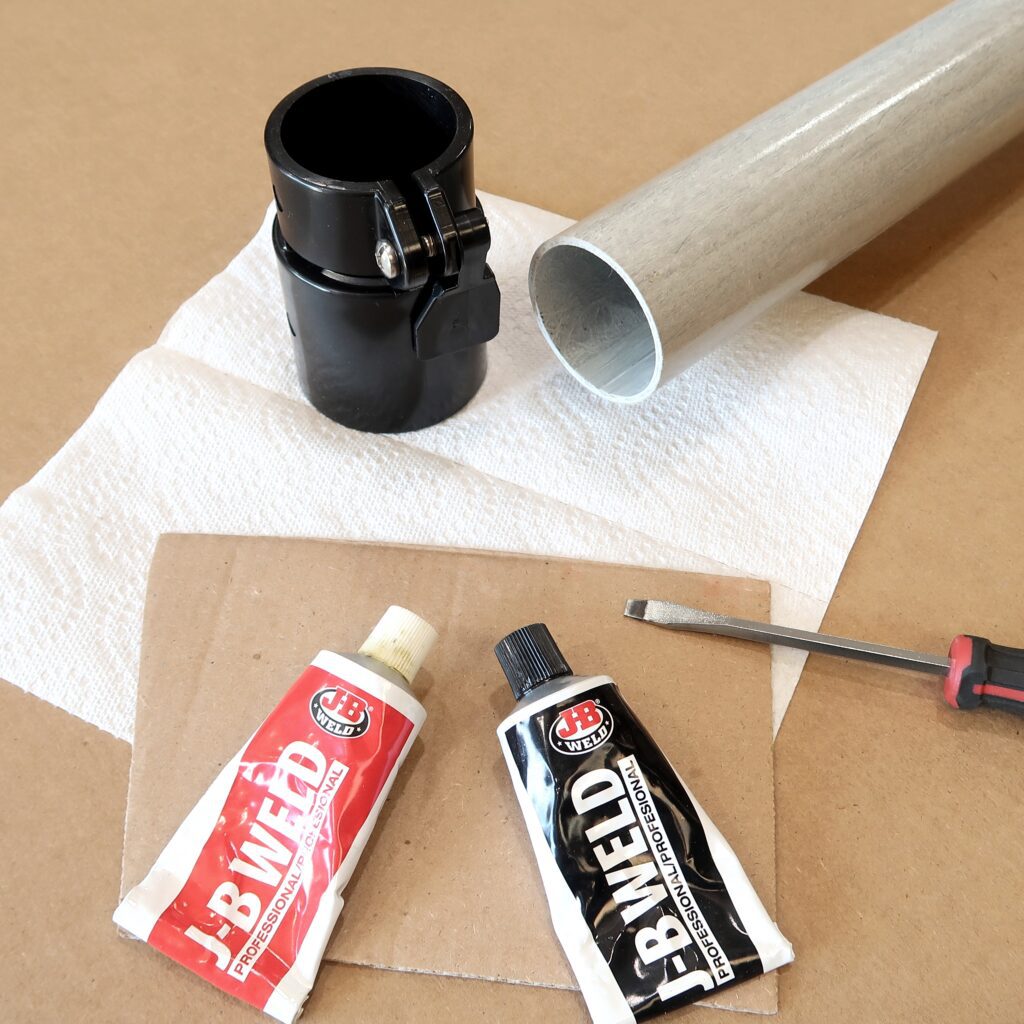

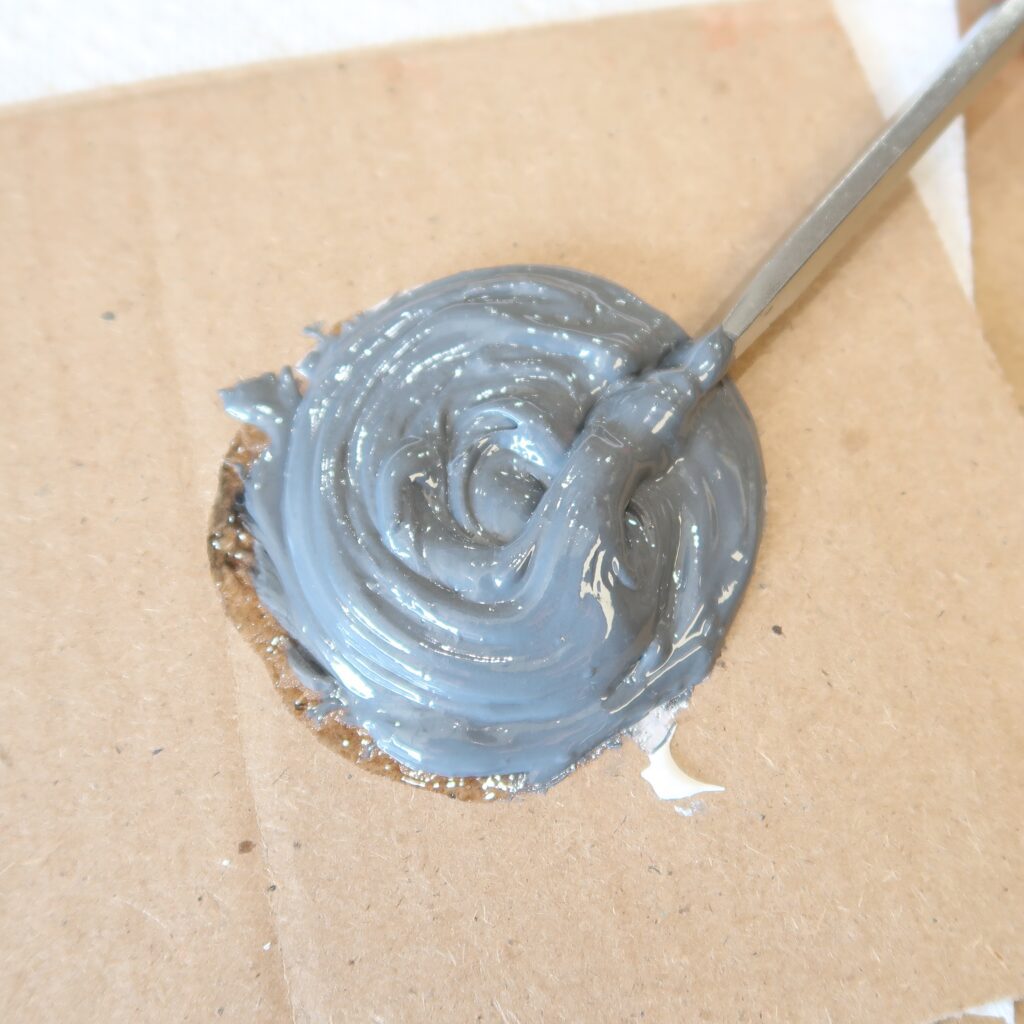
Applying the Adhesive
The adhesive does not need to be smeared all over the tube. We are going to make one thick bead of adhesive, one inch down, from one end of the tube. When the thick bead is done being applied to the tube place the corresponding telescoping tube clamp onto the tube. Rotate the clamp a quarter turn, left and right, while slowly pressing the clamp onto the tube. This will smear the adhesive around plenty and this also avoids the largest potential problem of adhesive migrating its way up the tube and squeezing its way over the edge of the tube and inside the clamping area. This would make an impassible block of adhesive and following these directions will completely avoid that. Right now the adhesive is still a little runny so be sure to set the tube down on a flat surface AND, before you let go of the tube and clamp, make sure the telescoping tube clamp is completely seated. If not, this could create a “binding point” because the clamp would not be aligned.
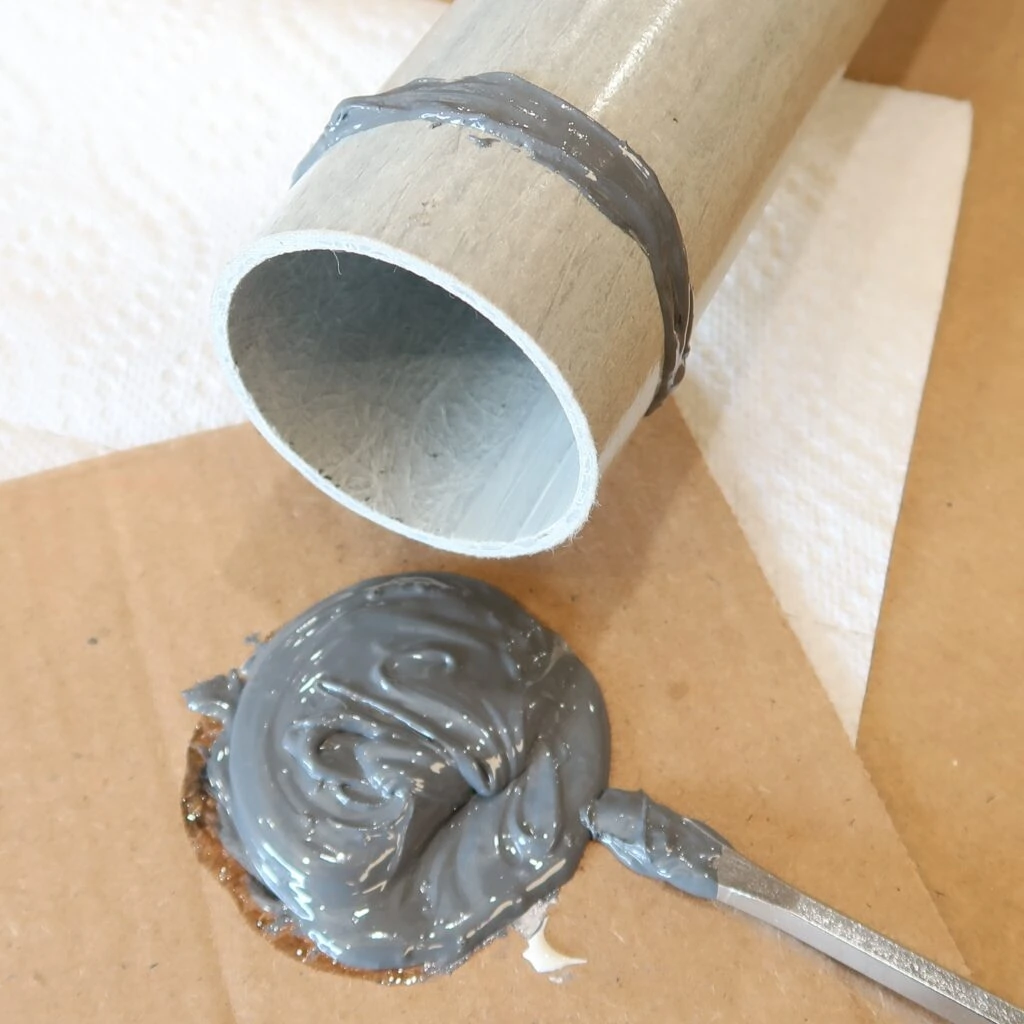
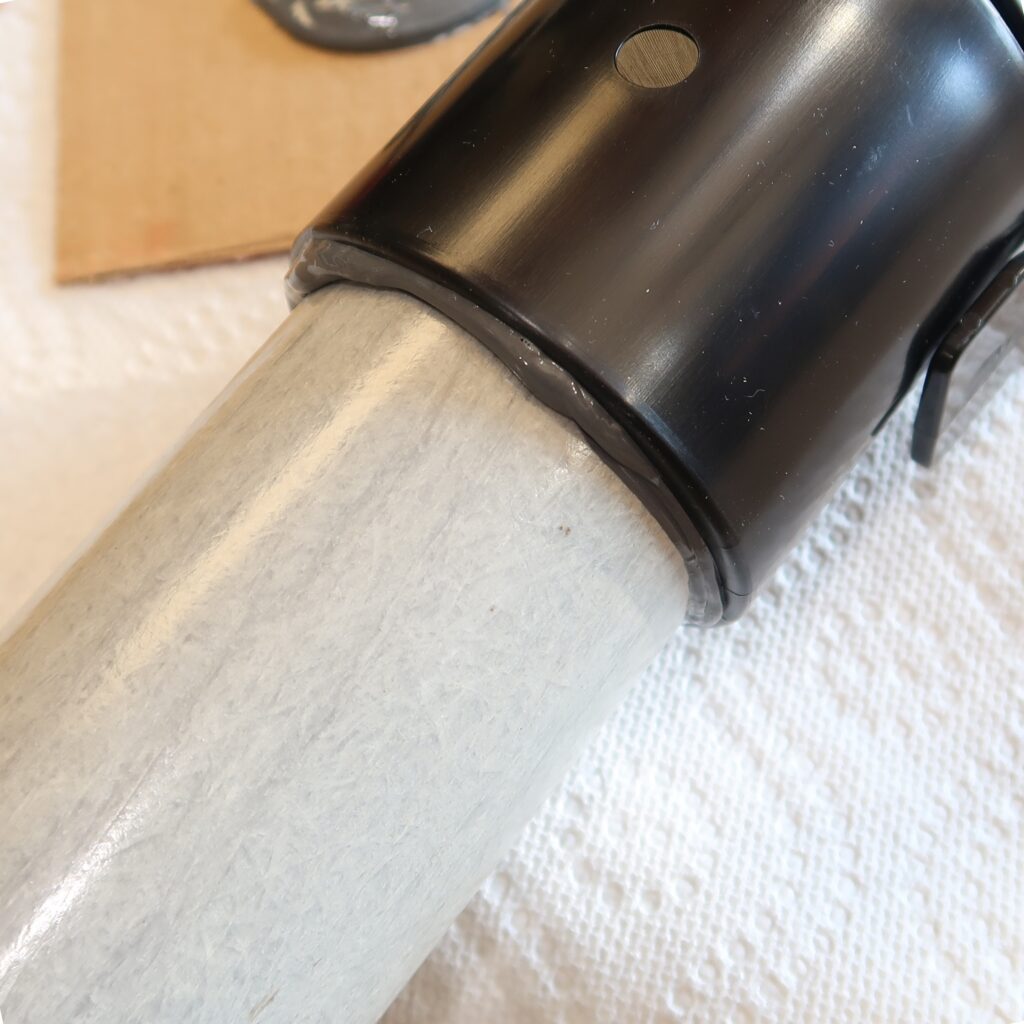
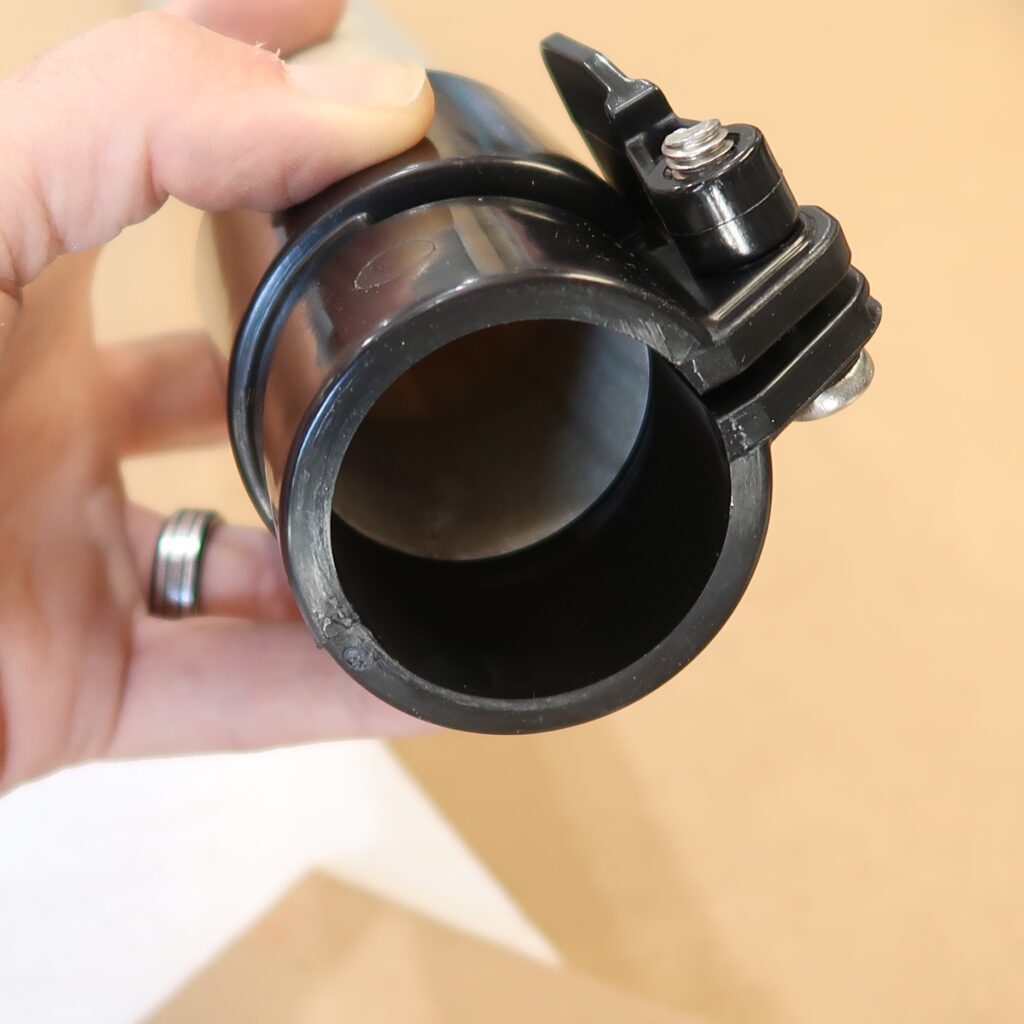
Once you have glued on all of the clamps set them all on that same flat surface to fully cure. Be safe and put a paper towel under the clamps so in the case you have a little “seepage” it will pool on the paper towel that can be thrown in the trash later. JB Weld 2 Part Epoxy (The Original Coldweld Formula) says you can start using your parts in about 4 hours, but I like to give it a full day.
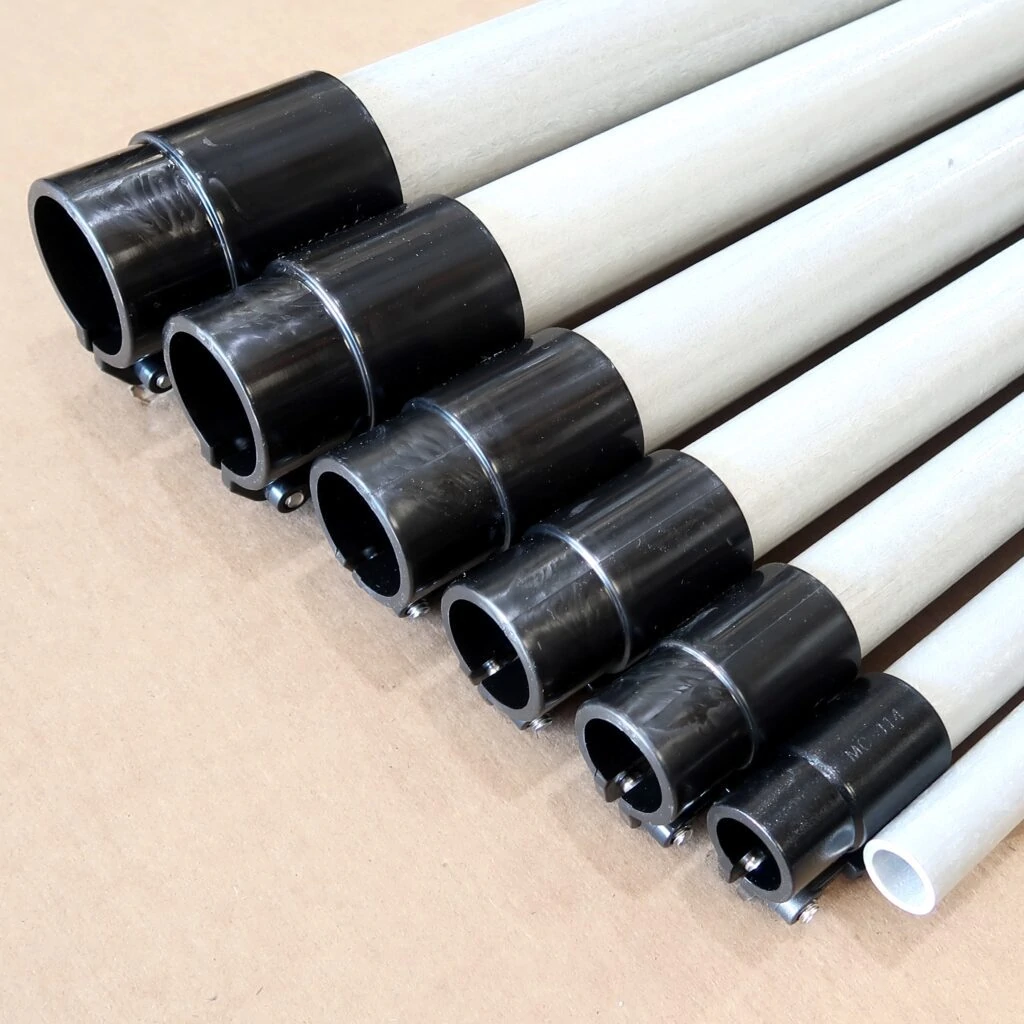
Marking the Tubes
Now that the mast clamps are completely installed onto the ends of the tubes we need to mark the tubes where we need to stop raising the mast once we see the line. As I explained earlier, I am assembling this 38 foot mast but only extending it 23 feet and 6 inches. Doing this gives the tubes maximum rigidity by increasing the overlap at every tube joint. We need to mark each tube 35 inches down from the top of each tube but DO NOT measure from the end of the clamp. This will add an inch or so and will not have the same desired effect. At 35 inches make a black mark. We will be using the rest of the clamps to make our full line in the next step during assembly.
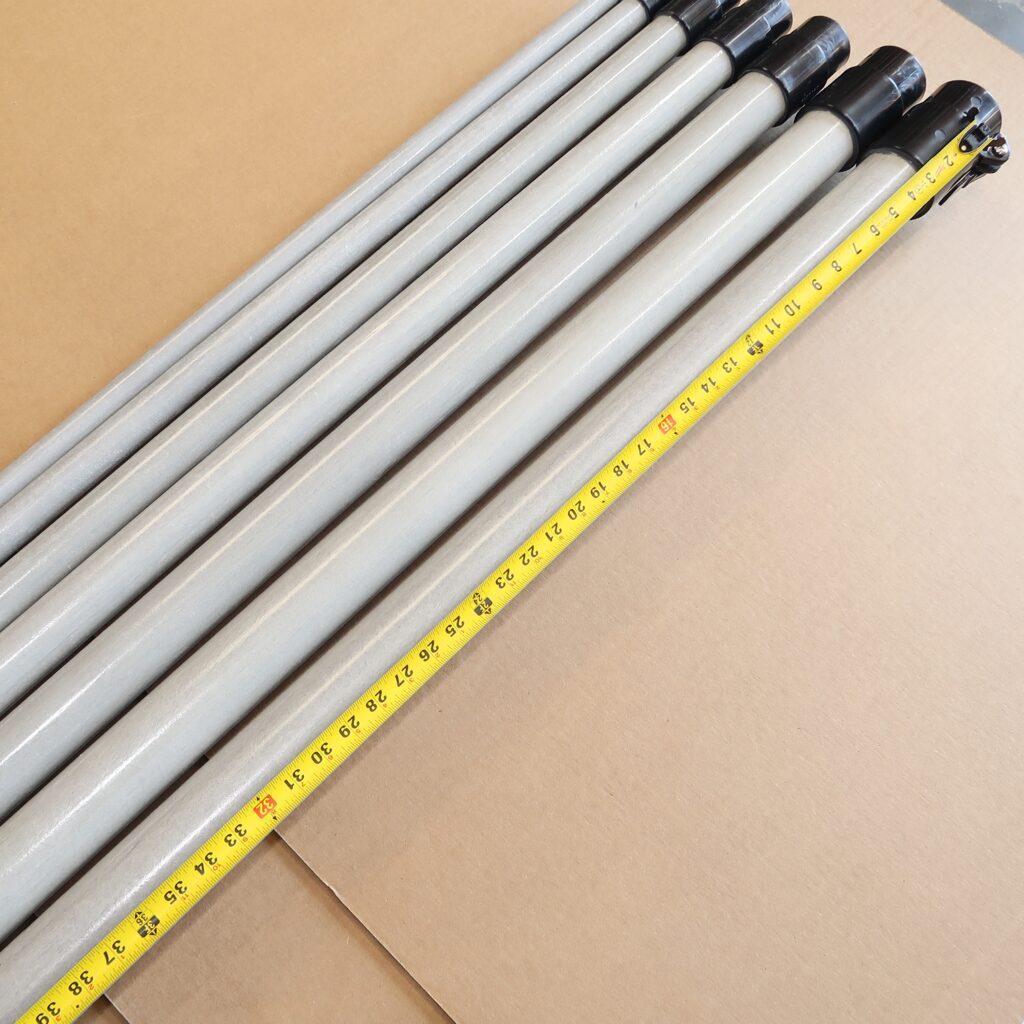
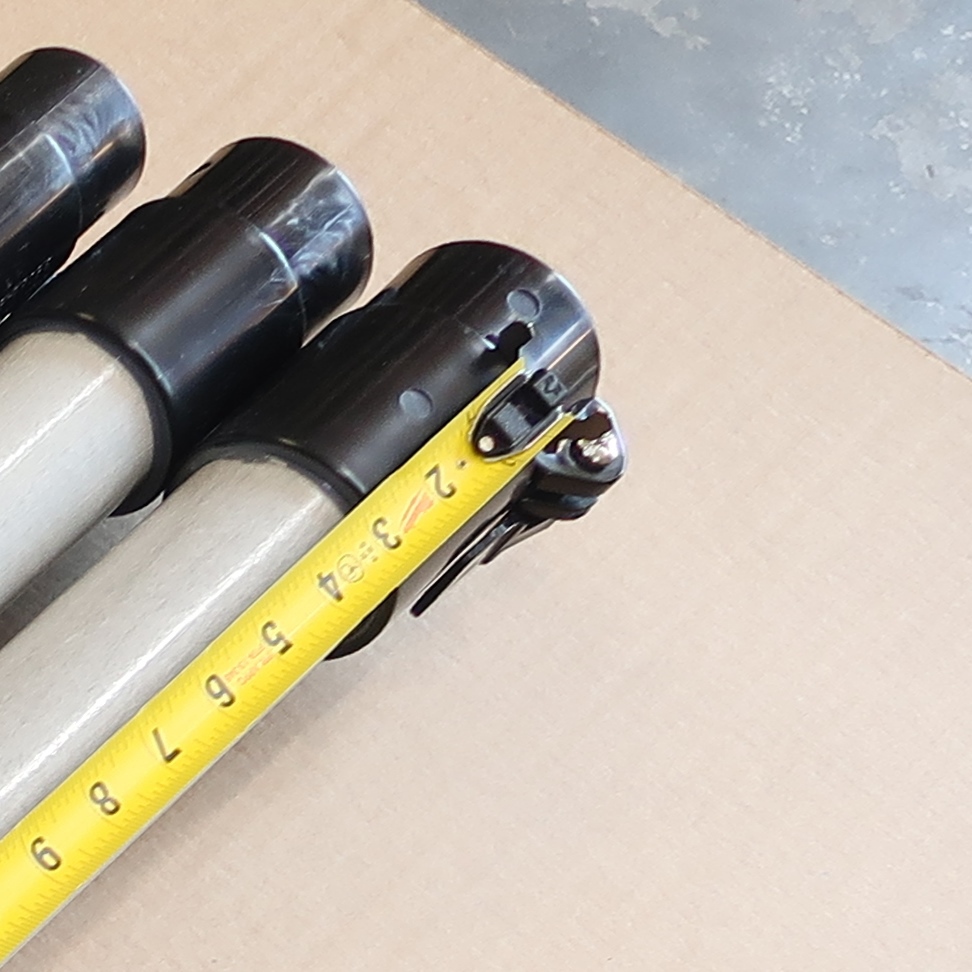
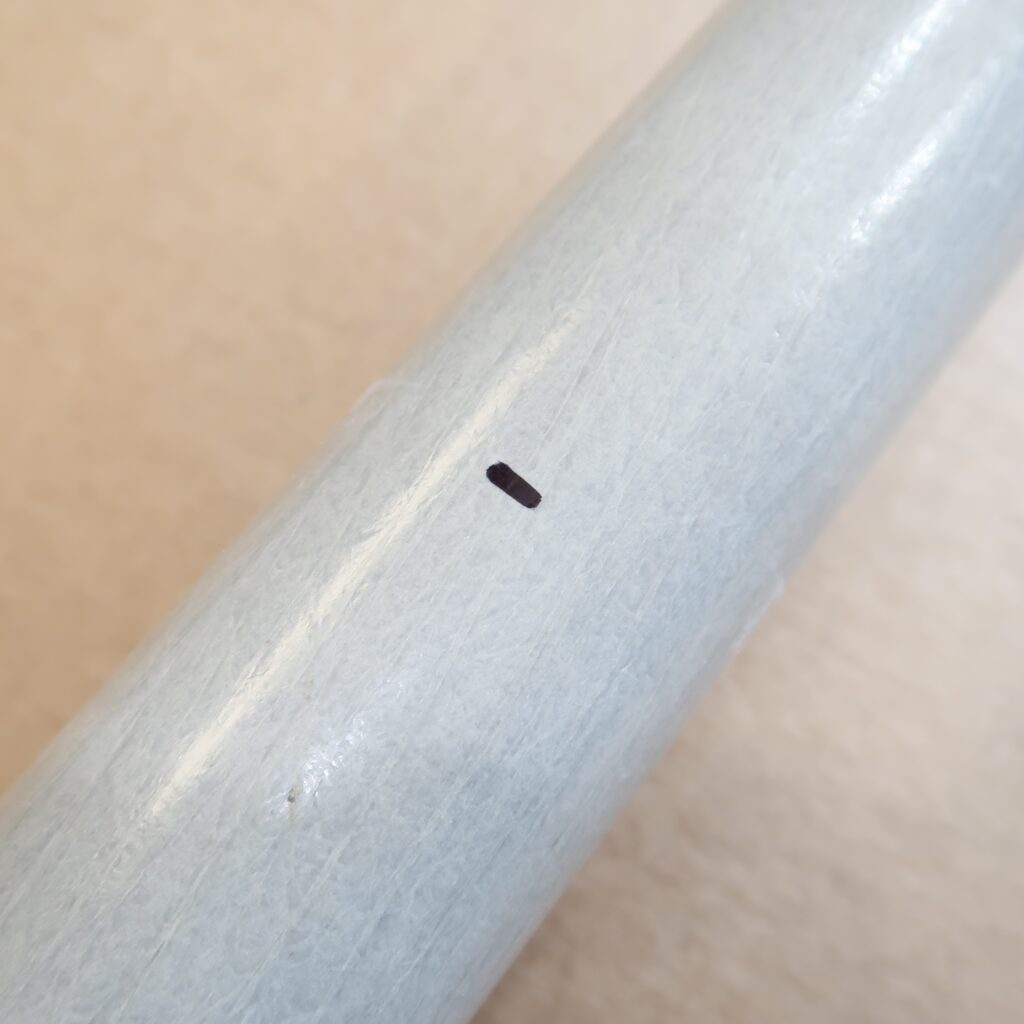
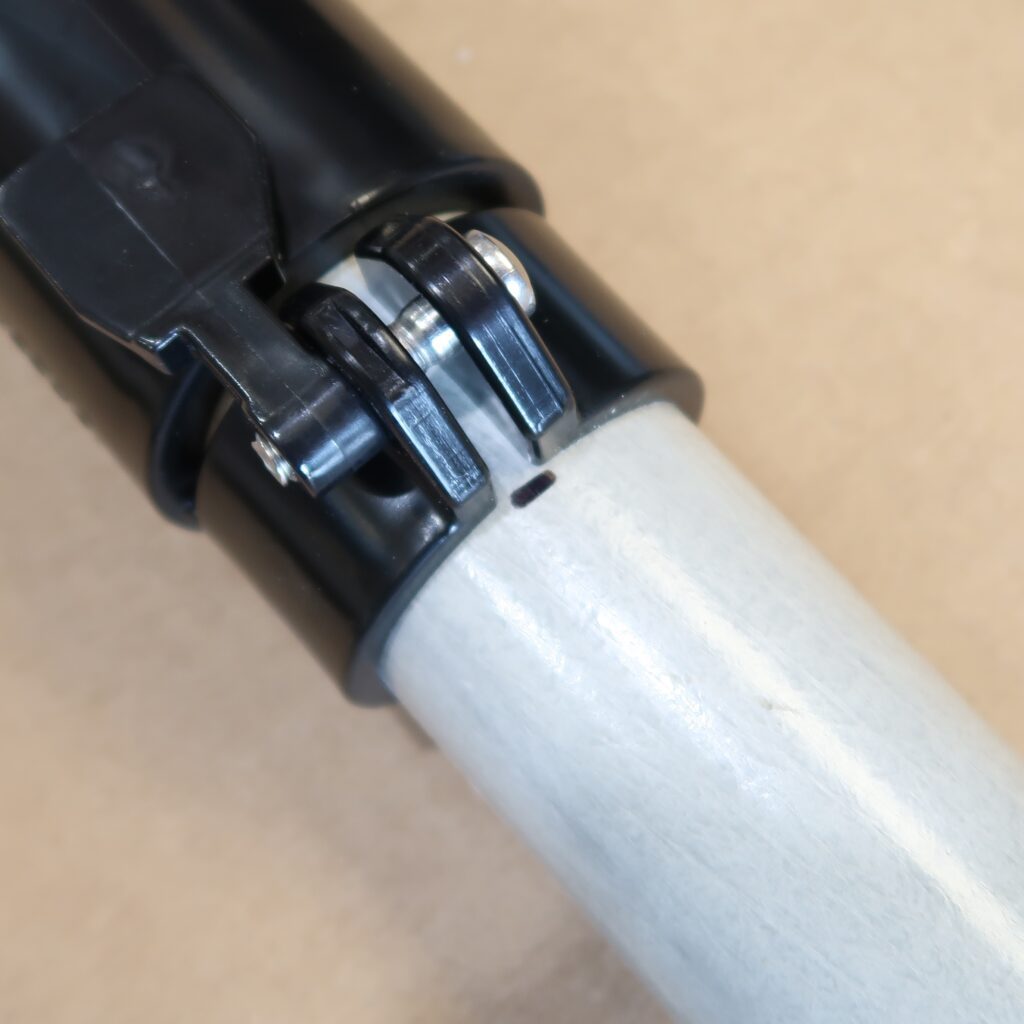
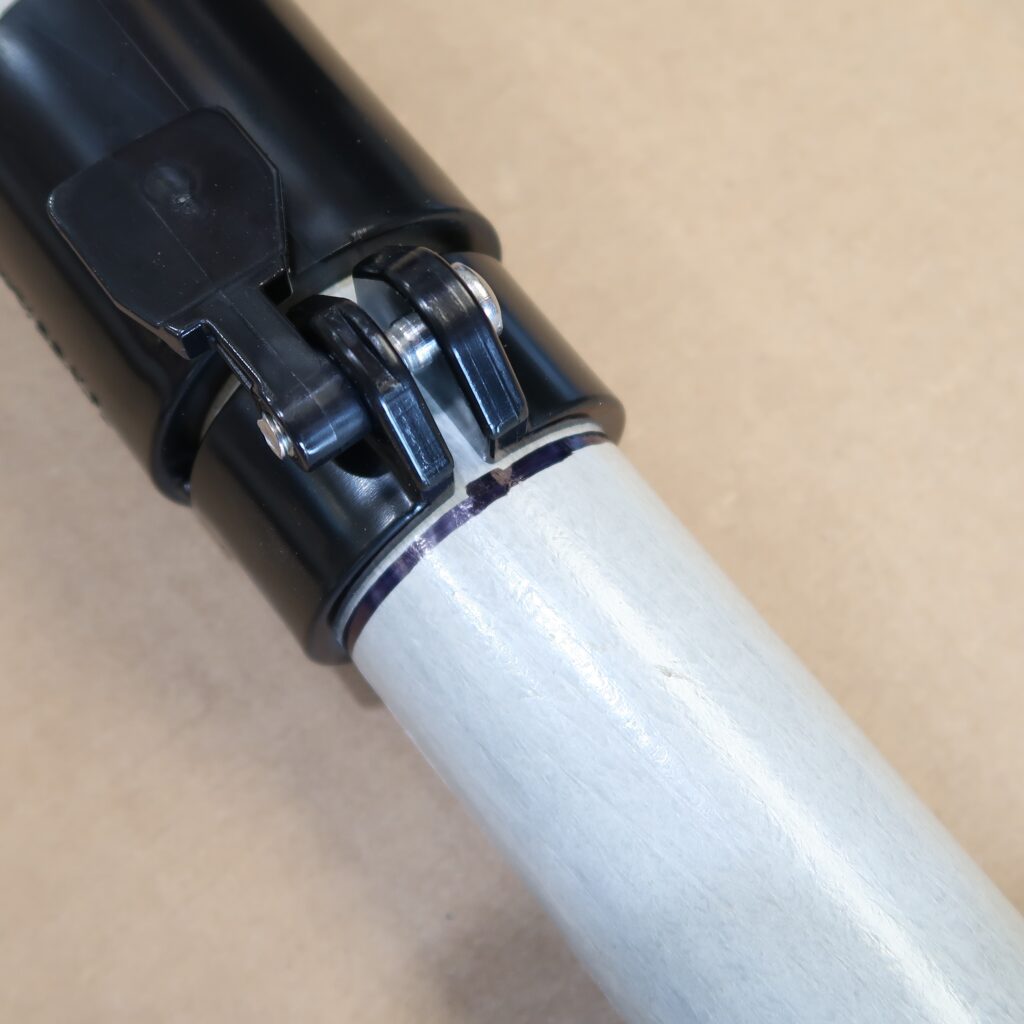
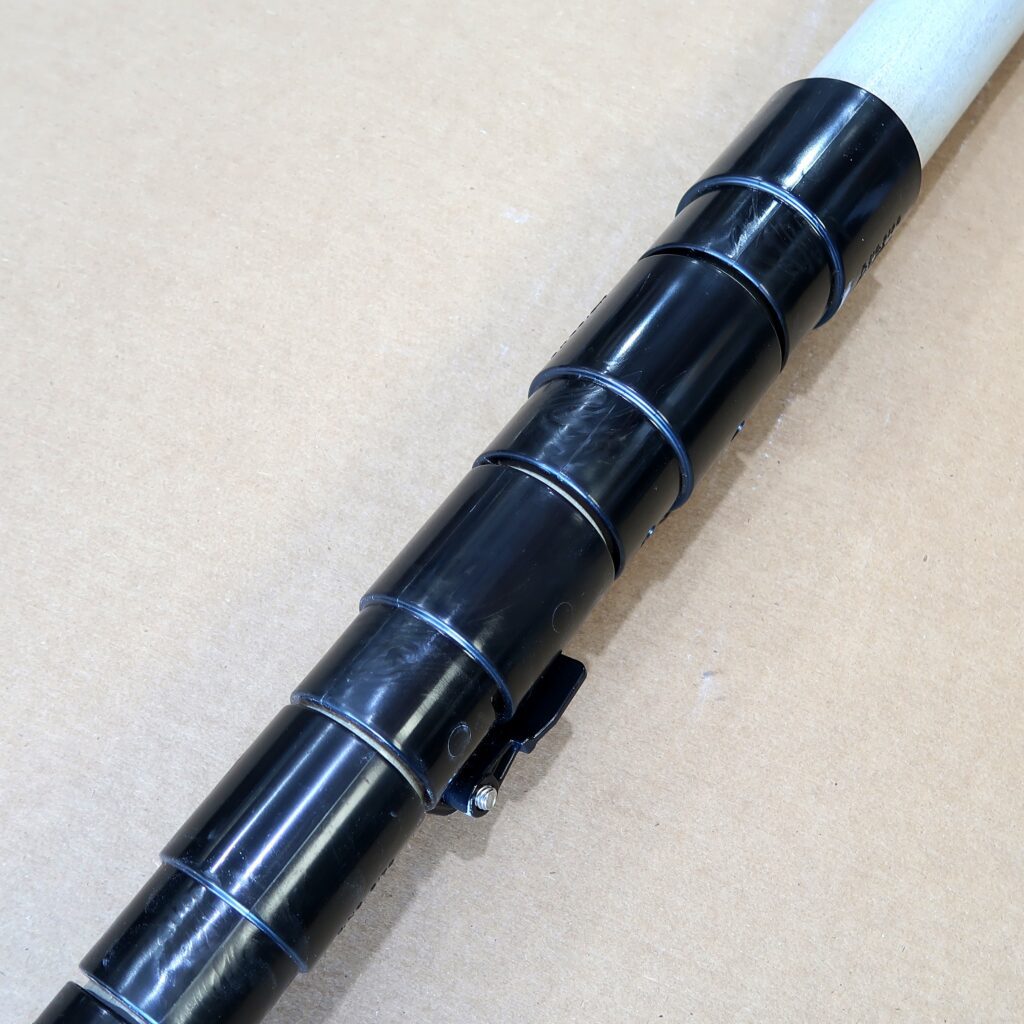
Adjusting the Clamping Screws
After the Quik-Clamps are cured, you can then raise the thumb-clamp levers and insert the tubes within one another. You will notice a screw in the clamp. This screw is used to adjust the tension of the clamping mechanism. With a Phillips tip screwdriver, (be certain to use a large enough Phillips screwdriver to properly engage the large screw slots. (Preferably a #3 Phillips). Tighten the screw just to the point before it hinders passage of the inner tube. The screw is REVERSE THREAD, so turn COUNTERCLOCKWISE to tighten. TEST the thumb clamp at that point, and make certain that you have the tension adjusted properly so that you may extend the inner tube, and that when the thumb clamp is in the “down” position, that the inner tube is gripped FIRMLY. It is most important not to over-tighten the screw. The thumb clamps have tremendous leverage, and if over-tightened, something HAS to give… (probably one of the sides of the clamp “ears”). Try this adjustment a few times until you find the perfect setting. Do not use thread-lock compound on the screws. It is not necessary, and thread-lock compound is one of the very few things that can attack and weaken the material used to make the clamps.

Finished!
Once the clamps are completely tightened to the right tightness the mast is completely assembled. Next we are going to look at installing this mast into the brackets and also how to make the coax runs we need in order to get our signal from the helium miner up to the antenna.
Missed Part 1? Click below! Checkout Part 3 here:
